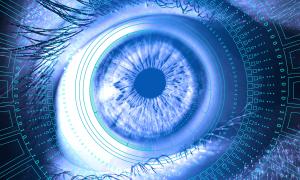
Deepfakes are a new technology where a person’s face is taken from stills or video and put onto some other video making it appear like they did whatever is in the subsequent video. Such videos are quickly becoming indistinguishable from real videos. I want to take a summary of deepfakes – the technology and the uses – then analyze the moral issues
The Reality of Deepfakes
Forbes recently ran a story. It began:
Last month during ESPN’s hit documentary series The Last Dance, State Farm debuted a TV commercial that has become one of the most widely discussed ads in recent memory. It appeared to show footage from 1998 of an ESPN analyst making shockingly accurate predictions about the year 2020.
When I saw the commercial, I had assumed that they had just filmed it now and added fake video effects making it look like a 1998 piece. Instead, it was a deepfake of the announcer back then.
Deepfake Technology
The Forbes article explains the technology:
Deepfake technology enables anyone with a computer and an Internet connection to create realistic-looking photos and videos of people saying and doing things that they did not actually say or do.
A combination of the phrases “deep learning” and “fake”, deepfakes first emerged on the Internet in late 2017, powered by an innovative new deep learning method known as generative adversarial networks (GANs). […]
While impressive, today’s deepfake technology is still not quite to parity with authentic video footage—by looking closely, it is typically possible to tell that a video is a deepfake. But the technology is improving at a breathtaking pace. Experts predict that deepfakes will be indistinguishable from real images before long.
“In January 2019, deep fakes were buggy and flickery,” said Hany Farid, a UC Berkeley professor and deepfake expert. “Nine months later, I’ve never seen anything like how fast they’re going. This is the tip of the iceberg.”
Today we stand at an inflection point. In the months and years ahead, deepfakes threaten to grow from an Internet oddity to a widely destructive political and social force. Society needs to act now to prepare itself.
Uses of Deepfakes
The same Forbes story also explained some uses, both benign and problematic:
Several deepfake videos have gone viral recently, giving millions around the world their first taste of this new technology: President Obama using an expletive to describe President Trump, Mark Zuckerberg admitting that Facebook’s true goal is to manipulate and exploit its users, Bill Hader morphing into Al Pacino on a late-night talk show.
The amount of deepfake content online is growing at a rapid rate. At the beginning of 2019 there were 7,964 deepfake videos online, according to a report from startup Deeptrace; just nine months later, that figure had jumped to 14,678. It has no doubt continued to balloon since then. […]
The first use case to which deepfake technology has been widely applied—as is often the case with new technologies—is pornography. As of September 2019, 96% of deepfake videos online were pornographic, according to the Deeptrace report.
You can read the whole Forbes piece if you want more.
Moral Issues with Deepfakes
One can use deepfakes in OK, debatable, and outright vicious ways.
OK Deepfakes
The OK uses might be something where everyone involved consents. For example, if as part of the wedding preparation, the father of the bride goes in and makes a deepfake of him predicting who his daughter would marry when she was 12, I don’t see any issues. Likewise, if all the people in the Statefarm commercial agreed to it, it seems fine.
Debatable Deepfakes
The debatable are cases where there might be issues or might not be. For years, a form of comedy has been to take videos of famous people and do a voiceover, possibly with slight video adjustments, for comedic effect (Double Exposure, Bad Lip Reading, etc.). I can imagine deepkfaking could be done so that the lips perfectly match the new voiceover. If this is clearly a fake video for comedy, it is not necessarily immoral. However, it still might have issues regarding the reputation of those in the video. The Catechism in 2477 & 2479 note that we should respect others’ reputations:
Respect for the reputation of persons forbids every attitude and word likely to cause them unjust injury. He becomes guilty:
- of rash judgment who, even tacitly, assumes as true, without sufficient foundation, the moral fault of a neighbor;
- of detraction who, without objectively valid reason, discloses another’s faults and failings to persons who did not know them;
- of calumny who, by remarks contrary to the truth, harms the reputation of others and gives occasion for false judgments concerning them. […]
Detraction and calumny destroy the reputation and honor of one’s neighbor. Honor is the social witness given to human dignity, and everyone enjoys a natural right to the honor of his name and reputation and to respect. Thus, detraction and calumny offend against the virtues of justice and charity.
This is a constant issue with comedy and I think the rules for this would be similar to the rules for comedy in general.
Vicious Deepfakes
I see two vicious uses. First, it’s immoral to present a video as true when it is not without the consent of the people involved. Second, one can use deepfakes to blackmail or defame another.
Forbes mentioned two examples that clearly fall into a sin against the 8th commandment as they present falsehood as truth: “President Obama using an expletive to describe President Trump, [and] Mark Zuckerberg admitting that Facebook’s true goal is to manipulate and exploit its users.” This is also manipulative. Making a video that purports to show something seems like a lie, only worse as video makes it far more believable.
Blackmail and defamation seem to be a huge issue with deepfakes. 96% of online deepfakes are pornography, which is likely either for defamation or blackmail. Pornography would be a prime example of an online video that obviously defames someone but it would not be the only one. (Deepfake pornography is always defamation, even if not intended.) Defamation is clearly a sin against the 8th commandment as explained above.
One can use these videos to blackmail another. One could send a video of a person that would defame them if public, and demand money to keep in from the public. Blackmail seems to go against both the 7th (theft) and 8th (lying) commandments. This book lists it in the 7th commandment because it is an unjust taking of money. Even if extortion is about revealing true information, the Catechism warns us, in the section on the 8th commandment (2488) that not all truth should be said:
The right to the communication of the truth is not unconditional. Everyone must conform his life to the Gospel precept of fraternal love. This requires us in concrete situations to judge whether or not it is appropriate to reveal the truth to someone who asks for it.
Obviously, pornographic deepfakes also have issues regarding the 6th and 9th commandments on top of that. I think people reading my blog are already familiar with such issues so I won’t make this long. You can read my prior pieces on pornography if you like.
Conclusion
Deepfakes can be used in moral ways if done with the consent of all involved or in certain cases where done as comedy and presented as fake. However, they present a whole bunch of privacy and moral cases in the vast majority of the uses one might make of them. The vicious uses are far more predominant. I don’t have any magical solution to regulate these as the internet means international borders are of little relevance.
Note: Please support me on Patreon so I can keep writing stuff like this.







